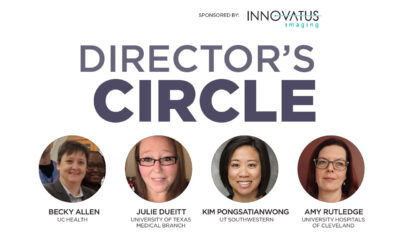
 There is a plethora of leadership theories and books on leadership out there. Most of you have probably heard of servant leadership, transformational leadership, adaptive leadership and strength-based leadership. I would like to introduce you to another, wisdom leading as introduced by Foster W. Mobley, Ed.D., in his book, “Leadersh*t: Rethinking the True Path to Great Leading.” I have had the honor and privilege of working directly with Mobley and his team at FMG Leading over the past year and have really started to change my focus as a leader.
There is a plethora of leadership theories and books on leadership out there. Most of you have probably heard of servant leadership, transformational leadership, adaptive leadership and strength-based leadership. I would like to introduce you to another, wisdom leading as introduced by Foster W. Mobley, Ed.D., in his book, “Leadersh*t: Rethinking the True Path to Great Leading.” I have had the honor and privilege of working directly with Mobley and his team at FMG Leading over the past year and have really started to change my focus as a leader.
Wisdom leading posits that great leading “is less about what you do, and more about who you are.” The purest form of leadership to me is when people follow the leader because they want to, not because they feel they need to in promise of some reward or in avoidance of some negative consequence. In wisdom leading, the leader is very clear on what they believe in and lives that belief every day. One of my core beliefs is that the leader should be what I call “the chief believer” in whatever it is that you expect your team to buy in to. For me, that translates into one of my goals that every patient, regardless of their circumstance, is deserving of the very best care possible and that everything we do or consider doing is always rooted first in what serves the best interest of the patient. I try to live this every day and role model this in every interaction. I preach this message at every opportunity. I never tolerate any other course and my team knows that they can expect this consistency from me. Leading then is “about how you show up.” Another trait of wisdom leading is that the leader goes first. The leader is the first person to take risks and test the waters of uncertainty. The leader is willing to take calculated gambles in support of who they are. The leader also is willing to take responsibility for their teams and ownership of any failures.
A leader practicing wisdom leading defines meaning for their team and creates hope. It is the leader’s job to interpret situations and provide context for their teams. For example, most institutions have a strategic plan. Have you as a leader provided meaning and context to your team so that they understand how the strategic plan contributes to the organization’s mission and exactly what their role in it is? It is the leader who should provide that meaning into why we do what we do and what you expect the team to do to get there.
One of the hardest concepts of wisdom leading for me has been the idea that a leader takes care of themselves first so that they can be better for their team. Just as the airline safety instructions tell you to place your own oxygen mask on first so that you can help others, the leader develops their own unique talents, passions and skills so that they are better equipped to share those with their team. This seems contrary to many of us as health care leaders because it is an important tenet for us to take care of others, that is why most of us entered this profession in the first place. These two concepts do not have to be at odds. What I am saying is that you can most effectively help others when you first take care of yourself. This means making time for your own development and exercise to nourish your body and mind. Also, not neglecting the relationships in your life especially your family and friends. Find whatever those things are that nourish your being and spend quality focused time on those. Steven Covey, in his book “The 7 Habits of Highly Effective People” refers to this concept as “sharpening the saw.” If you, the saw, are not kept honed and sharpened you can not be an effective tool in the shaping and molding of others. This should not be a source of guilt for the leader, but a source of pride that they are devoting time for self-improvement and self-fulfillment so that they can be effective and impactful leaders. Mobley captures the concept in this phrase, “leading means building capacity in yourself and others to create breakthrough results.”
Mobley uses the allegory of picturing your life in terms of a stream. In this stream are stones of various sizes from pebbles to boulders. These stones represent all of the obstacles that prevent the waters of our stream from flowing freely. The leader challenges themselves to remove those obstacles from their stream and asks themselves, “What would be made possible if this stone was removed?” The most impactful leaders keep sight of the stones in their streams and actively work to remove these obstacles for themselves and others. Some of these stones may be deeply rooted in the ground and require great effort to move, but the bigger and deeper rooted the rock the larger the rewards once removed. So, I challenge you to reflect on what is blocking your stream and what would be made possible for yourself or others if it was removed. My journey in practicing wisdom leadership has been difficult but rewarding. I am sure it will be a lifelong pursuit to fully clear my stream. I highly recommend, “Leadersh*t, Rethinking the True Path to Great Leading” which is packed with many more valuable concepts and tools for self-reflection.
Mario Pistilli, CRA, MBA, FACHE, FAHRA, is administrative director for imaging and imaging research at Children’s Hospital Los Angeles. He is an active member and volunteers time for ACHE and HFMA organizations. He is currently serving on the AHRA national Board of Directors. He can be contacted at mpistiili@chla.usc.edu








